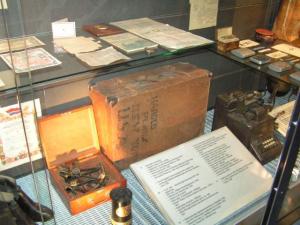My cousin, who lives in Estonia, asked me how many cars have I ever had. I tried to remember. It would depend on how you count them. Do all cars in the family count? Do I count all the cars with my name on the registration? When my kids were below the legal age, their cars were in my name too. Thus, it depends.
My cousin’s question brought on a flood of memories. Well before reaching driving age boys have visions of driving. They imagine the rush they will get by driving at the edge of their ability to control the beast. I recall that while still living in post-war Germany I experienced being transported in American Army trucks along up-and-down alpine roads. I envisioned myself behind a steering wheel and shifting gears, calling for optimum amount of power to the wheels by selecting gear ratios. In this daydream I was veritably Walter Mitty, rhumm, rhumm…
An opportunity arose for my family to immigrate to the Unites States when my father found a sponsor. Our sponsor wrote that she and her husband had an old car, which they were going to sell for $100. I pleaded with my parents that they write to her to keep the car, and that I would pay for it as soon as I got a job.
I was 15 ¾ years old when we left the “old world” on a “Liberty Ship” named the General H. W. Muir. On the evening of 21 March of 1949 we entered the mouth of the Hudson River. Passengers came on deck to silently watch the landscape unfold. As if they knew their destiny was in the power of the ship. This scene was a parallel to when we left Tallinn in September of 1944. A feeling prevailed that “we have done everything we can, now we must wait what the next day will bring.” With the city’s skyline visible we stayed there the night anchored in a bay.
Next morning, as we were tugged into the harbor, we had our first sight of our destination: a fog-shrouded New York City skyline. We passed a statue. I was told that it was named the “Statue of Liberty.” But the concept of liberty or freedom did not mean much to me. What I could or what I could not do at my age was defined for me by my parents. I did what they told me to do. That is how one survives in wartime. But I had a vague feeling that somehow unbounded possibilities awaited me on the shore, and a car would be one of them.
We had to wait on the ship until the afternoon by which time the baggage of all passengers was offloaded onto the pier. When my father had found our suitcases we located a customs officer. Once cleared by him, our sponsor met us. She made arrangements for a taxi to transport our suitcases, rucksacks and a wooden chest to her home in the Bronx, a New York suburb. To show that I had no idea of the vastness of the city I had written as a precaution on one suitcase our destination address: “Harold Plaks, New York, USA.” (This suitcase, made of Masonite and belt straps, is now in a display case in the Occupations Museum in Tallinn, as an example of DP camp handiwork)
We followed our worldly possessions by subway. This trip itself was a memorable event - being in a crowded subway for an hour - people staring at my best suit, my brown “golf knickers”. Everywhere was noise, motion and smells. When we arrived at the home of our sponsor in the Bronx there was no old jalopy in the garage, but a brand new Oldsmobile. Oh what a car, all shiny black and streamlined. But my hopes were dashed; their old car had been traded in.
Our sponsor was Mrs. Margaret Cardozo (Paalberg), who was born in Estonia but immigrated to the USA in the thirties to distance herself from her drunkard ex-husband. In America she married Mr. Joe Cardozo, an immigrant from Brazil. Right up to the war my father had maintained contact with her to exchange postage stamps. Having re-established contact with her after the war she sent us food packages. When in 1948 the US Congress passed a law allowing two hundred thousand displaced persons to enter the country, she offered to be our sponsor. The sponsor was required to guarantee that the emigrant would not become a burden to the state. This meant the sponsor had to provide a job and a place to live for the first year. The place they offered us to live was their weekend cottage in the state of Connecticut.
We stayed in their house for several days. Then, on the 28th of March, Mrs. Cardozo took us to their weekend home 60 miles north east of New York City. The drive in their luxurious Oldsmobile was memorable. As we sailed east on the Merritt Parkway I marveled at the new, boxy Fords, shapes I had never seen before or imagined. What cars, what a country!
(To be continued)
The mystique of owning four wheels (4)
Archived Articles | 14 Sep 2007 | Arved PlaksEWR
Viimased kommentaarid
Kommentaarid on kirjutatud EWR lugejate poolt. Nende sisu ei pruugi ühtida EWR toimetuse seisukohtadega.
Bob - you emigrate from, immigrate to. Arved is right in this case...
For page navigation in English, click on Canadian flag or ENG on the top right corner of the page (underneath the blue header).
It will remember your preference for next time.
It will remember your preference for next time.
Interesting story. Try to hurry on with the next installment pleeeezzz...bridging worlds like this makes for captivating reading.
Archived Articles
TRENDING



















